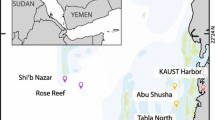Abstract
We have obtained sediment samples from the world's deepest sea-bottom, the Mariana Trench challenger point at a depth of 10 898 m, using the new unmanned submersible Kaiko. DNA was extracted from the sediment, and DNA fragments encoding several prokaryotic ribosomal RNA small-subunit sequences and pressure-regulated gene clusters, typically identifed in deep-sea adapted bacteria, were amplifed by the polymerase chain reaction. From the sequencing results, at least two kinds of bacterial 16S rRNAs closely related to those of the genus Pseudomonas and deep-sea adapted marine bacteria, and archaeal 16S rRNAs related to that of a planktonic marine archaeon were identifed. The sequences of the amplifed pressure-regulated clusters were more similar to those of deep-sea barophilic bacteria than those of barotolerant bacteria. These results suggest that deep-sea adapted barophilic bacteria, planktonic marine archaea, and some of the world's most widespread bacteria (the genus Pseudomonas) coexist on the world's deepest sea-bottom.
Similar content being viewed by others
Author information
Authors and Affiliations
Additional information
Received: October 10, 1996 / Accepted: March 3, 1997
Rights and permissions
About this article
Cite this article
Kato, C., Li, L., Tamaoka, J. et al. Molecular analyses of the sediment of the 11000-m deep Mariana Trench . Extremophiles 1, 117–123 (1997). https://doi.org/10.1007/s007920050024
Issue Date:
DOI: https://doi.org/10.1007/s007920050024




